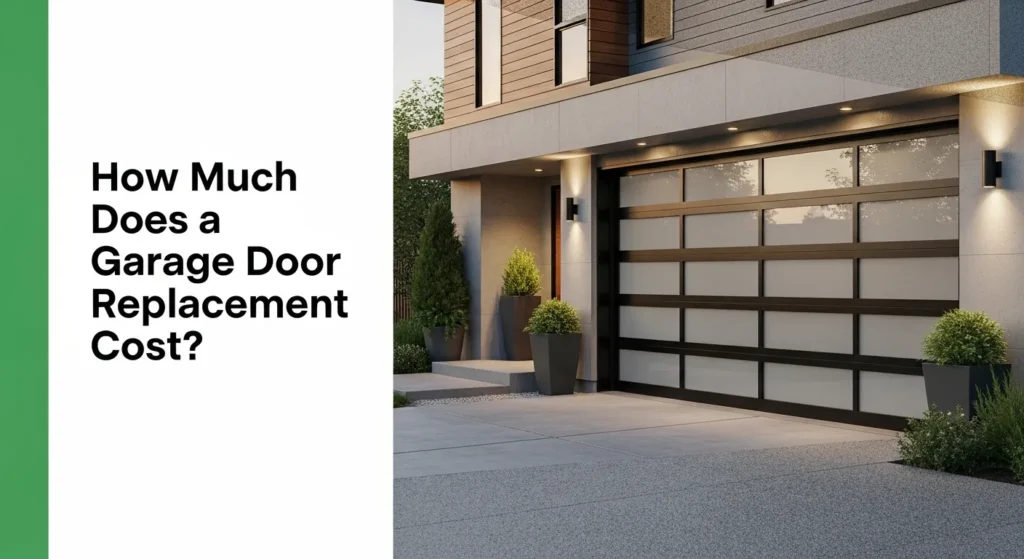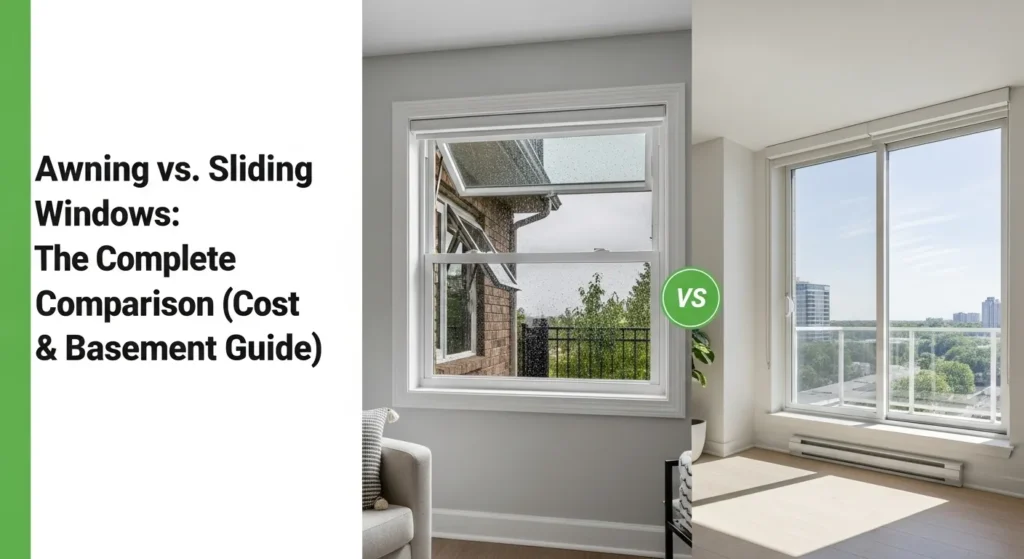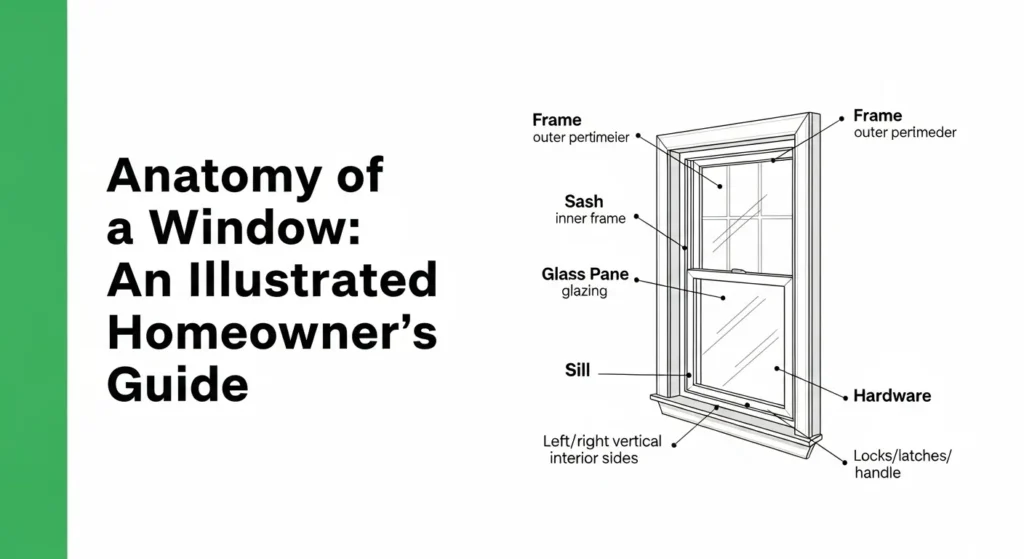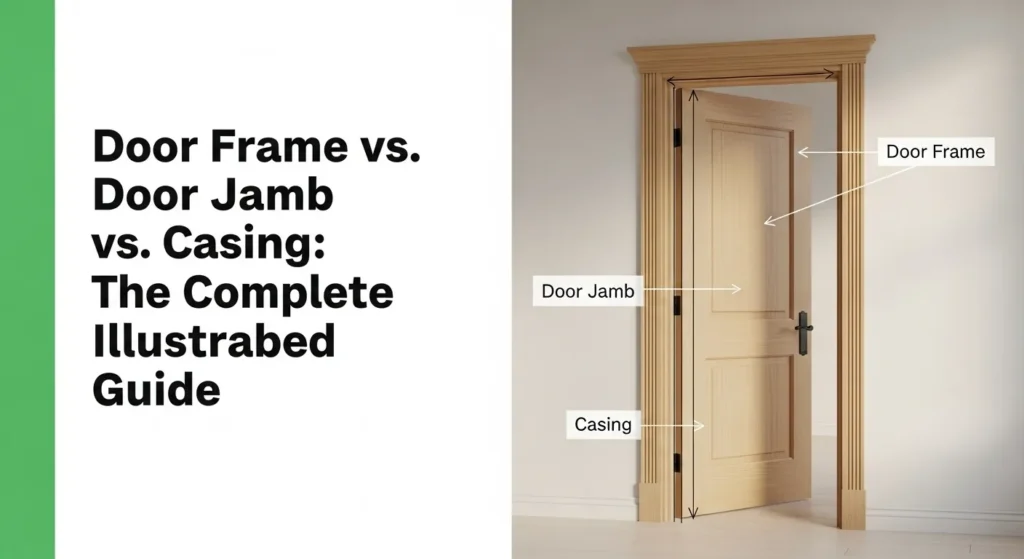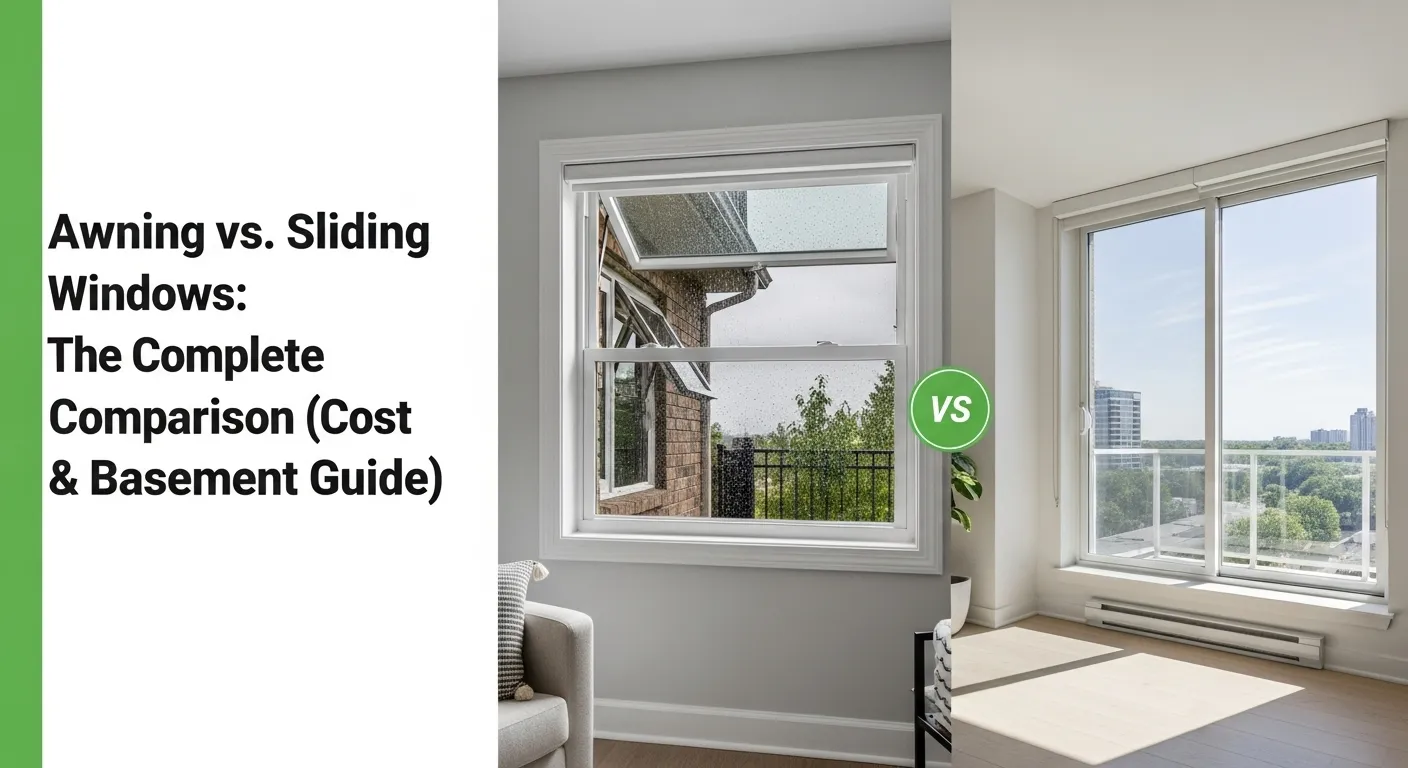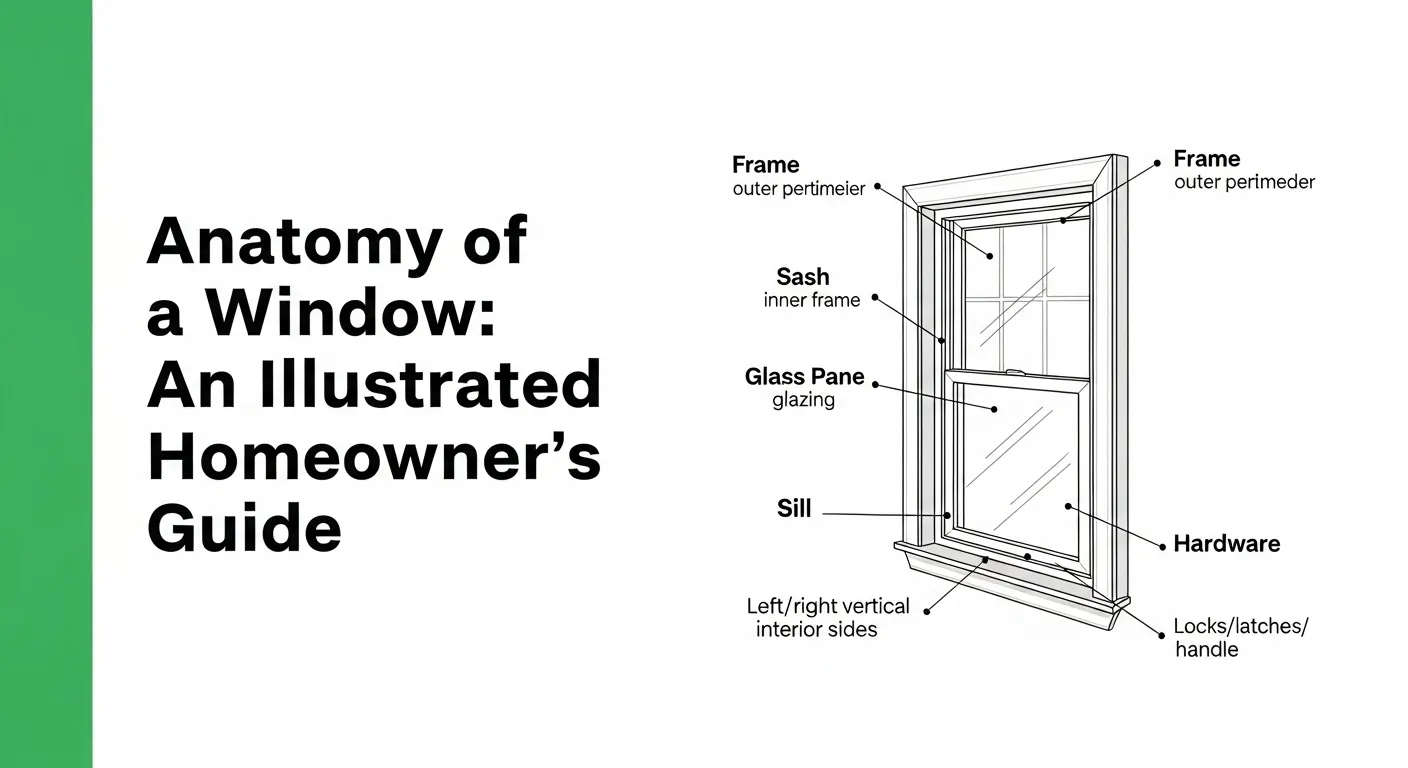Vos fenêtres à guillotine simple collent, laissent passer les courants d'air ou présentent des signes de dommages ? Ces problèmes courants peuvent nuire au confort et à l'efficacité énergétique de votre maison. Heureusement, de nombreux problèmes de fenêtres à guillotine simple peuvent être réparés avec des outils et des techniques de base.
Ce guide explique comment diagnostiquer et résoudre les problèmes les plus fréquents : châssis collés, fenêtres hors rail, fuites d'air (courants d'air) et dommages physiques mineurs. Nous vous aiderons à décider s'il s'agit d'une réparation à faire soi-même ou s'il est temps de faire appel à un professionnel.
Tout d’abord, un petit rappel : Qu'est-ce qu'une fenêtre à guillotine simple? Il est doté d'un châssis supérieur fixe et d'un châssis inférieur qui coulisse verticalement dans des rails, souvent assistés par un système d'équilibrage.
Outils dont vous pourriez avoir besoin pour les réparations
Avoir ces éléments à portée de main peut aider à effectuer la plupart des réparations mineures :
- Sécurité: Lunettes de sécurité (indispensables !), gants de travail
- Nettoyage: Aspirateur avec tuyau/suceur plat, chiffons humides, savon doux
- Lubrification: Lubrifiant en spray au silicone (NON à base d'huile) ou cire de paraffine
- Grattage/Levier : Couteau à mastic, couteau utilitaire, petit levier
- Fixation : Jeu de tournevis
- Scellage: Calfeutrage de qualité extérieure (adapté au matériau des fenêtres), pistolet à calfeutrer, coupe-froid
- Réparation du bois (le cas échéant) : Mastic à bois, papier de verre, apprêt/scellant
- Autre: Mètre ruban, pince, marteau
Problème 1 : Fenêtres coincées ou difficiles à déplacer
Un châssis de fenêtre qui se bloque ou qui nécessite une force excessive pour s'ouvrir/se fermer est une frustration courante.
Causes possibles :
- Pistes sales : De la saleté, de la poussière, des débris ou de la crasse s’accumulent dans les canaux des montants latéraux.
- Manque de lubrification : Les pièces mobiles ont besoin de lubrification pour glisser en douceur.
- Joint de peinture : La peinture séchée peut coller efficacement le châssis au cadre ou aux butées.
- Gonflement/déformation du cadre : Le bois ou même le vinyle peuvent se dilater/se contracter avec l’humidité ou se déformer avec le temps.
- Problèmes liés au système d'équilibre : Des balanciers cassés ou défectueux peuvent gêner le mouvement. (Voir les détails réparation du système d'équilibrage guide).
Comment réparer le blocage :
- Nettoyez soigneusement les pistes :
- Abaissez le châssis inférieur. Passez soigneusement l'aspirateur sur les rails visibles des montants latéraux. Utilisez un suceur plat pour pénétrer en profondeur dans les rainures.
- Essuyez les rails avec un chiffon humide et du savon doux pour éliminer la saleté. Séchez complètement.
- Soulevez le châssis et répétez le nettoyage pour la partie inférieure des rails.
- Lubrifier:
- Appliquer un petite quantité de lubrifiant en spray au silicone directement dans les rails côté propre.
- Vous pouvez également frotter de la cire de paraffine (ou même une vieille bougie) le long des bords du châssis qui entrent en contact avec les rails.
- Faites glisser le châssis de haut en bas plusieurs fois pour répartir le lubrifiant. Essuyez l'excédent.
- Briser les joints de peinture :
- Si la peinture semble être le problème, passez soigneusement un couteau utilitaire le long de la couture où le châssis rencontre le cadre et s'arrête (à l'intérieur et à l'extérieur).
- Insérez délicatement un couteau à mastic dans la ligne marquée et frappez légèrement avec un marteau ou un agitateur pour rompre l'adhérence de la peinture. Travaillez sur tout le pourtour du châssis.
- Une fois en mouvement, poncez légèrement les points de peinture surélevés sur les bords du châssis ou le cadre si nécessaire.
(Si le nettoyage et la lubrification ne résolvent pas le problème de collage, le problème peut provenir du système d'équilibrage ou d'une déformation du cadre, nécessitant potentiellement une réparation plus avancée ou l'aide d'un professionnel).
Problème 2 : châssis de fenêtre hors rail
Si le châssis inférieur semble incliné, lâche ou sort de son canal, il est probablement hors piste.
Comment résoudre ce problème :
- Contrôle de sécurité : Assurez-vous que la zone est dégagée. Si le châssis semble très lâche, demandez de l'aide. Portez des gants et des lunettes de sécurité.
- Tentative de réalignement : Poussez et remuez doucement le châssis tout en essayant de le faire coulisser. Il arrive parfois qu'il revienne facilement dans son rail.
- Retirer et réinstaller le châssis (si nécessaire) : Si le mouvement ne fonctionne pas, vous devrez retirer le châssis et le réinstaller correctement.
- Suivez les étapes de notre guide pour savoir comment retirer et réinstaller un châssis de fenêtre à guillotine simple (en utilisant des loquets basculants ou des clips de retrait/méthodes de pression selon votre type de fenêtre).
- Inspecter les pistes : Pendant que le châssis est sorti, inspectez les rails pour déceler toute obstruction (saleté, débris, pièces pliées, vis desserrées). Nettoyez soigneusement. Vérifiez l'état des sabots d'équilibrage.
- Réinstaller correctement : Remettez soigneusement le châssis dans les rails, en vous assurant que les barres de pivot s'engagent avec les patins d'équilibrage (le cas échéant) et que les loquets d'inclinaison se verrouillent.
- Test: Faites glisser la fenêtre complètement de haut en bas pour assurer un fonctionnement fluide et un alignement correct.
Problème 3 : Courants d'air et fuites d'air
Sentir un mouvement d’air autour d’une fenêtre fermée signifie une mauvaise étanchéité.
Comment résoudre ce problème :
- Vérifiez les coupe-froid : Inspectez les bandes pelucheuses ou caoutchoutées autour des bords du châssis et à l'endroit où celui-ci rejoint le seuil et le montant supérieur. Si elles sont comprimées, déchirées, fissurées ou manquantes, elles doivent être remplacées.
- Décollez l'ancien coupe-froid. Nettoyez la surface.
- Coupez un nouveau coupe-froid autocollant (une bande en V en mousse ou en caoutchouc fonctionne généralement bien) à la longueur souhaitée et appliquez-le fermement au même endroit.
- Inspecter et appliquer le calfeutrage : Vérifiez les joints où le cadre de la fenêtre rencontre le mur intérieur et le revêtement/la garniture extérieure.
- Retirez tout vieux mastic fissuré à l'aide d'un cutter ou d'un couteau à mastic. Nettoyez soigneusement la zone.
- Appliquez un cordon continu de mastic d'extérieur approprié (extérieur) ou de mastic latex/silicone à peindre (intérieur) pour sceller les interstices. Lissez le cordon.
Pour plus de techniques d'étanchéité, consultez notre guide sur sceller et sécuriser les fenêtres.
Problème 4 : Dommages physiques mineurs
Les petits problèmes peuvent souvent être résolus :
- Cadres en vinyle : Les petites fissures peuvent être réparées avec des kits époxy vinyliques. Les fissures plus importantes nécessitent souvent une évaluation professionnelle ou remplacement du châssis/cadre.
- Cadres en bois : Grattez les petites traces de pourriture et rebouchez avec du mastic époxy pour bois, poncez, appliquez une couche d'apprêt et peignez. Corrigez l'écaillage de la peinture en grattant, ponçant, appliquant une couche d'apprêt et en peignant.
- Cadres en aluminium : Nettoyez la corrosion légère avec des nettoyants appropriés. Les bosses sont difficiles à réparer parfaitement.
- Verre brisé : Le remplacement d'une vitre brisée nécessite des étapes spécifiques - consultez notre guide sur le remplacement des vitres.
Quand réparer ou remplacer
Envisagez une réparation si :
- Le problème est mineur (collage, courants d'air dus à de mauvais joints, petite pourriture du bois).
- Le cadre de la fenêtre est toujours structurellement sain.
- Le coût de la réparation est nettement inférieur à celui du remplacement. (Comparer coûts de réparation par rapport aux coûts de nouvelles fenêtres).
Envisagez de le remplacer si :
- Le cadre est gravement pourri, déformé ou endommagé.
- Plusieurs vitres sont brisées ou les joints sont défectueux (buée).
- Les réparations deviennent fréquentes ou coûteuses.
- Vous souhaitez une mise à niveau significative dans efficacité énergétique ou le style.
- L'ampleur des dégâts rend la commande [nouvelles fenêtres à guillotine simple de remplacement] une solution à long terme plus pratique et plus précieuse.
Maintenance préventive : éviter les problèmes futurs
Entretien régulier aide à prévenir les problèmes :
- Pistes propres : Passez régulièrement l’aspirateur et essuyez les rails (printemps et automne).
- Inspecter les joints : Vérifiez les coupe-froid et le calfeutrage de façon saisonnière; réparez-les au besoin.
- Lubrifier (si nécessaire) : Appliquer du silicone ou de la cire chaque année ou en cas de collage.
- Vérifier le fonctionnement : Assurez-vous que le mouvement est fluide et que le verrouillage est correct périodiquement.
Quand faire appel à un professionnel
Bien que le bricolage soit possible pour de nombreux problèmes, faites appel à un professionnel de la réparation de fenêtres si :
- Vous n'êtes pas à l'aise avec les aspects réparation ou sécurité (travail en hauteur).
- Le problème concerne le système d'équilibre et vous n'êtes pas sûr comment le réparer.
- Le cadre présente des dommages importants, de la pourriture ou des déformations.
- Remplacement de vitre implique des unités à double vitrage ou semble trop complexe.
- Les tentatives de bricolage n’ont pas résolu le problème.
Conclusion
De nombreux problèmes courants liés aux fenêtres à guillotine simple, comme le grippage, les courants d'air et les dommages mineurs, peuvent être résolus avec un peu d'investigation et des compétences de base en bricolage. Un nettoyage et un entretien réguliers sont votre meilleure protection contre les problèmes futurs. N'hésitez pas à faire appel à un professionnel pour les réparations complexes ou lorsque la sécurité est un problème. Résoudre rapidement les problèmes garantit le bon fonctionnement de vos fenêtres et le confort de votre maison.
